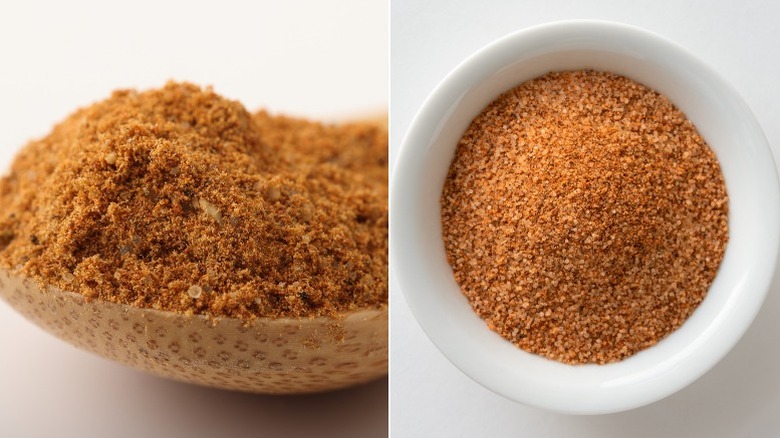The Subtle Difference Between Creole And Cajun Seasoning
Most folks raised outside of Louisiana are probably unfamiliar with the state's culinary traditions, excluding perhaps gumbo, jambalaya, and deliciously sweet beignets. Probably just as many would also assume that Creoloe and Cajun are cultural and culinary synonyms. Two different names with a shared heritage. The two may overlap in many ways, but there are distinct differences that define each culture's origins, along with their cuisines. Similarly, their choice of seasonings may overlap, but both have distinct traits, and serve different roles in a Louisiana kitchen.
The main thing that both cultures have in common is that they are considered mixed cultural groups. According to Britannica, the first Cajuns were French colonists that were expelled from the Acadia region of Nova Scotia. Houma Travel notes that in their long journey from the early Canadian territories to southern Louisiana, the first Cajuns adopted other cultures into their own (via marriage); these people hailed from a variety of backgrounds, including Germans, Italians, and free people of color.
Creole, on the other hand, is a term that's evolved over the years (via Britannica). Originally it was used in the West Indies to denote someone who was born of European descent, but grew to become a catch-all term for anyone abiding by Caribbean culture. Both groups settled down in southern Louisiana, and while some may boast of a particular heritage, the cultures have also mixed together as well, which might also explain why Cajun and Creole seasonings are considered by some to be the same, though they are different — the difference, however, is subtle.
Cajun seasoning has more of a kick
Just like their eponymous cultures, Cajun and Creole seasonings are a mix of different influences and cuisines that have been blended together over centuries to create something new. MasterClass notes that Cajun seasoning is made with ground black pepper, white pepper, cayenne pepper, onion powder, garlic powder, and paprika. The variety of peppers that go into the mix give it a notoriously spicy kick. Creole spice mix, on the other hand, is made from black pepper, garlic powder, onion powder, dried thyme, basil, and oregano, per PepperScale, which adds that Creole seasoning is sometimes given a pinch of cayenne pepper for spice, but has a much more earthy and herbal flavor than its Cajun counterpart.
Both are used to season a variety of savory dishes, and pair excellently with meat, fish, or hearty stews. The spices can also be used interchangeably. Both go well on similar dishes, and contain similar flavor profiles in many ways. The main difference is the spice factor present in the Cajun seasoning, which makes Creole seasoning a great alternative for someone hoping to try their hand at shrimp étouffée, but can't handle the heat. Spiceography notes the extra heat of Cajun seasoning may be considered too strong, though, for some Creole dishes.

